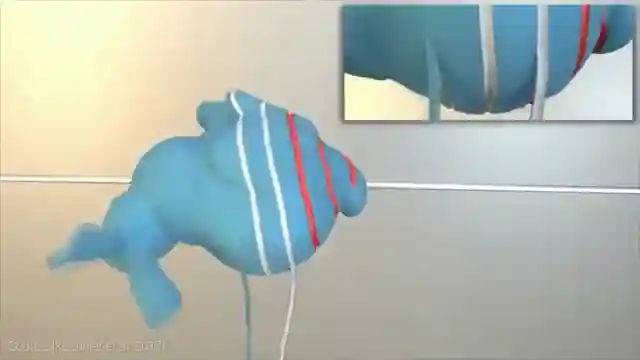Revolutionizing Graphics: 3DGUT Technique for Real-Time Rendering

- Authors
- Published on
- Published on
In this riveting episode, the team delves into the age-old debate between rasterization and ray tracing for crafting virtual worlds. While rasterization offers speed, it falls short on delivering top-notch reflections and refractions. On the other hand, ray tracing dazzles with its stunning effects but suffers from sluggish performance. Enter NVIDIA scientists with a bold proposition - why not combine the best of both worlds?
Introducing the groundbreaking 3DGUT technique, a fusion of rasterization, ray tracing, and Gaussian Splats that promises real-time, high-quality rendering. This technological marvel not only supports fisheye cameras and relighting for diverse environments but also brings forth the beauty of reflections, refractions, and translucency. It's a game-changer for computer graphics, paving the way for next-level virtual worlds and enhancing the training of self-driving cars.
But the innovation doesn't stop there. With the addition of Separable Subsurface Scattering, rendering realistic translucent objects becomes a breeze, offering super-fast human skin, marble, and milk textures. This new era of graphics technology opens up a world of possibilities, allowing users to seamlessly transition between different materials, from skin to glass to wax. The future of gaming and visual simulations has never looked more promising, thanks to the relentless pursuit of excellence in computer graphics research.

Image copyright Youtube

Image copyright Youtube

Image copyright Youtube

Image copyright Youtube
Watch NVIDIA’s New AI: Impossible Ray Tracing! on Youtube
Viewer Reactions for NVIDIA’s New AI: Impossible Ray Tracing!
"3D GUT" means "3D GOOD" in German
Paper on GTA 6
Expensive technology
Gaussian Splatting and Unreal Engine 5
Lack of shadows in new objects
Potential for security camera usage
Advancements in CGI
Horror games potential with virtual worlds
Future implications for texture and modeling technology
Implementation in games and other industries
Related Articles

AI Showdown: Gaming Challenges and Strategic Triumphs
Major AIs face off in gaming challenges like Tetris and Super Mario, showcasing varying levels of performance. OpenAI's o3 shines with strategic planning, while Sokoban tests spatial reasoning skills. Researchers introduce textual game representations to enhance AI performance across different games, revealing strengths and weaknesses in this exciting competition.

Enhancing 3D Worlds: Sharper Reconstructions and Dynamic Motion
Revolutionary neural fields training tweak eliminates artifacts, sharpens reconstructions. New technique brings dynamic motion to 3D scenes, enhancing realism. Gaussian Splats render scenes in motion at over 450 fps, promising a thrilling future for interactive virtual worlds.

Google's Advanced Tech: Realistic Scene Recreation & Pixel-Perfect Human Faces
Google's revolutionary tech recreates scenes with high-frequency details like subsurface scattering, creating realistic materials. Inverse Rendering produces pixel-perfect results for human faces. Subscribe to Two Minute Papers for more tech updates.

Revolutionizing Virtual Worlds: AI Advancements Reshaping Immersive Experiences
Revolutionary AI techniques are transforming virtual world creation. From lifelike scene rendering to accurate 3D reconstructions and realistic human avatars, remarkable progress is reshaping the future of immersive experiences. Explore the cutting-edge advancements in this exciting field!
